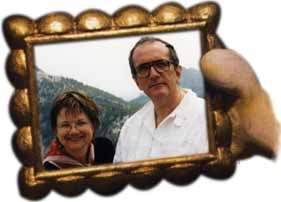|
 Some of the things that Wallace says are funny in our culture, because he says things that are ‘quaint’&endash; that is, no one would say them nowadays. For example, he said in the original episode 1, " Any post, was there? Perchance?’ We changed it to, ‘Is there any post? For me?’ Perchance is Shakesperian! He also says ‘I’ll get the bounder!’ in episode 6. We changed this to ‘I can catch him.’ "bounder" is 1920’s upper class slang&endash; and it’s not northern English at all. The words ‘perchance’ and ‘bounder’ are funny because of their cultural references. Students below upper intermediate level are not going to understand this, and nothing’s worse than a joke that’s taken ten minutes to explain! By simplifying it, we have lost this level of language and humour, but it is still very funny! Some of the things that Wallace says are funny in our culture, because he says things that are ‘quaint’&endash; that is, no one would say them nowadays. For example, he said in the original episode 1, " Any post, was there? Perchance?’ We changed it to, ‘Is there any post? For me?’ Perchance is Shakesperian! He also says ‘I’ll get the bounder!’ in episode 6. We changed this to ‘I can catch him.’ "bounder" is 1920’s upper class slang&endash; and it’s not northern English at all. The words ‘perchance’ and ‘bounder’ are funny because of their cultural references. Students below upper intermediate level are not going to understand this, and nothing’s worse than a joke that’s taken ten minutes to explain! By simplifying it, we have lost this level of language and humour, but it is still very funny! |
|


